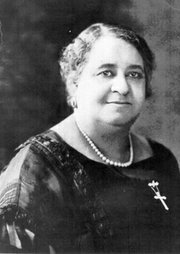Doing the dawdle
7/24/2015, 1:48 p.m.
Sometimes it takes this city forever to get things done.
Take the statue to the great lady of Richmond, Maggie L. Walker, who rose from poverty to become, among other things, the first African-American female to charter and run a bank in this country.
Richmond just celebrated the 151st birthday of Mrs. Walker on July 15.
A statue honoring this activist go-getter who made things happen during a time of harsh segregation and male domination has been talked about for at least 15 years.
Things finally started moving in 2013 when City Council approved funding for the statue at the request of Mayor Dwight C. Jones. The vote came with little fanfare.
As a result of the funding for the statue, the city’s Public Art Commission, which is responsible for developing monuments, markers, statues and similar items on city property, put the Maggie Walker statue on its to-do list.
A year ago, the commission began the process of selecting a sculptor. We researched it and found that the winning sculptor was selected in March.
If you haven’t heard about it, don’t be surprised. The commission refuses to say who has been selected. Neither will the Jones administration.
And that’s as far as this project has gone.
Why the delay and the secrecy?
The site apparently is still up in the air.
Since 2000, City Council has designated it to be placed at Lonesome Pine Park — the little triangle with a tree in it where Broad Street, Adams Street and Brook Road converge. Council’s reason: The site would provide prominent frontage on Richmond’s main drag.
However, advocates inside the administration and the commission argue for putting the statue in Abner Clay Park at West Leigh Street and Brook Road in the heart of Jackson Ward, the historic center of Richmond’s black community and where Mrs. Walker’s bank and other operations were located before and after her death in 1934.
There is some logic to that idea. The city is targeting Abner Clay Park for a $750,000 facelift in the next two years, and the new home of the Black History Museum and Cultural Center of Virginia is being developed in a historic armory across Leigh Street.
None of this, of course, is being talked about publicly.
So now, in the midst of the information vacuum, and the tempest over Confederate symbols on public property, the public has started to weigh in — with calls and Facebook posts suggesting the city raise a statue to Mrs. Walker on Monument Avenue.
Because the tree-lined avenue’s best sites are taken by monuments to Confederate traitors, advocates urge that at least one of those statues should go, most notably the one to Jefferson Davis, the president of the Confederate States during the Civil War who now serves as a poster child for white supremacists.
What is clear is that Mayor Jones and his administration, as well as the Public Art Commission, have lollygagged long enough to ensure the statue project cannot get done in time for the international bike races in September that the mayor and others claim will bring thousands of visitors to Richmond and be broadcast nationally and overseas.
Instead, visitors and viewers abroad will see Richmond’s attachment to its inglorious past — through an elegant boulevard of statuary memorializing its Confederate past as the capital of slavery.
The optics aren’t good.
Whether this was the mayor’s intention or not, this is what has happened because he has been doing Richmond’s favorite dance — the dawdle — while failing to move the Maggie Walker statue project along.
Perhaps it was to be expected. The Jones administration has not even been able to complete the audit of city spending during the 2014 fiscal year — more than 12 months after that fiscal year ended.
This is the reality for our city, which, in contrast to Mrs. Walker, is largely content to plod along and spend time talking about our potential.
A first-tier city?
Really?






